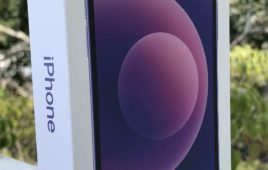MWCA is now done and Global Wireless Solutions, Inc. (GWS) has finished testing the network performance of the four wireless national carriers throughout the LA Convention Center. GWS has been marching around the convention center halls all week conducting tests using Rohde & Schwarz’s SwissQual Freerider platform connected to Samsung Galaxy S9 devices.
On Friday (day three of the show), there were no data task failures on any of the networks. For the entire week, after testing over 5,600 data tasks across the carriers, there was only one T-Mobile task that failed.
As far as throughputs go, AT&T pulled ahead of the pack during the last two days of the show. For T-Mobile and Verizon, “steady as she goes” was the name of the game this week. T-Mobile delivered 64-68 Mbps download and 22-24 Mbps upload throughputs during the three-day show. Verizon was even more consistent with 51-53 Mbps download and a solid 22 Mbps upload. AT&T started at 66 Mbps download on Day 1 but pulled ahead to 82 Mbps on Day 2 then 73 Mbps on Day 3. While uploading, AT&T offered a steady 17-21 Mbps speed. Sprint provided a 13-18 Mbps download paired with a 3 Mbps upload. AT&T was able to obtain top speeds with solid deployed bandwidth delivering a high number of resource blocks and high 256QAM usage. AT&T was in CA4 mode 13% of the time with a total of 40 MHz but also benefitted from 14% 256QAM and 4×4 MIMO, on average assigning 190k PRBs per second to the device.
T-Mobile used CA4 8% of the time with a total 80 MHz bandwidth and 8% 256QAM usage and 4×4 MIMO, but limited the PRBs assigned to the device to about 182k PRBs per second. T-Mobile relied heavily on LAA usage on 5-GHz spectrum (the only operator to do so) for its secondary aggregated carriers. Verizon maxed out at CA3 about 17% of the time with a total of 40 MHz of bandwidth and 4% 256QAM but no 4×4 MIMO. Sprint used CA3 only 2% of the time for a total of 60 MHz deployed (admittedly as shared downlink/uplink TD-LTE on its 2500-MHz spectrum). Sprint did not use any 256QAM nor 4×4 MIMO, but did have a very high 92% utilization of 2×2 MIMO.
For the week, AT&T and T-Mobile each experienced 1 call failure, while Sprint and Verizon had none. However, Sprint consistently exhibited weaker audio quality compared to the other networks.
So how did the networks fare through the entirety of the show? We plugged our results into our OneScore ranking algorithm, which weighs and combines all of the various voice and data KPI results and (considering the network performance elements that matter most to consumers) provides a single score on a scale from 0 to 10 (with 10 being the best). The weekly OneScore rankings for overall network performance, highest to lowest, were as follows: AT&T (9.55), Verizon (9.50), T-Mobile (9.48), and Sprint (7.90).
That’s a wrap – network testing of MWCA 2018 has now concluded! One last remark from GWS CEO, Dr. Paul Carter: “The operators came prepared. Their networks showed consistent performance while dealing with the large crowds – giving attendees reliable voice service and fast data connectivity. Using GWS’s OneScore methodology, AT&T just edged out the others to finish at the top. With new features and technologies being deployed throughout the year (5G perhaps?), who knows what will happen at MWCA 2019.”




